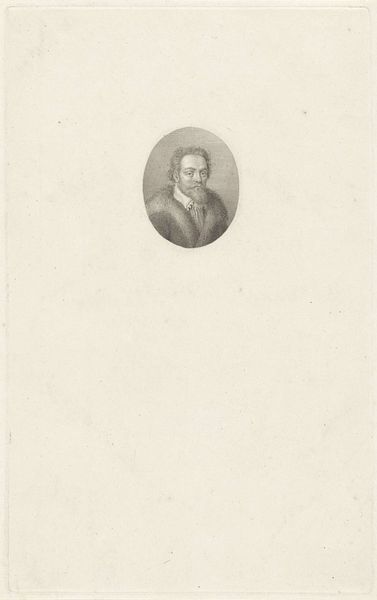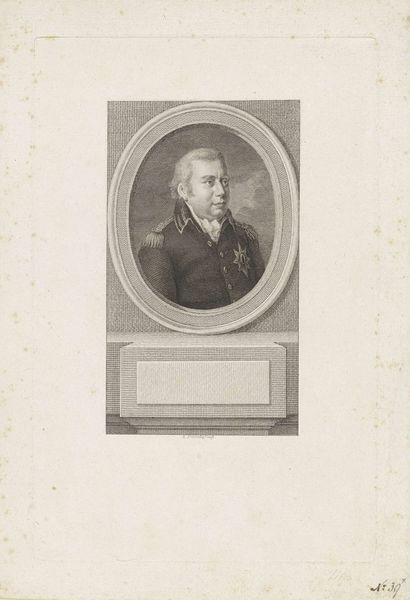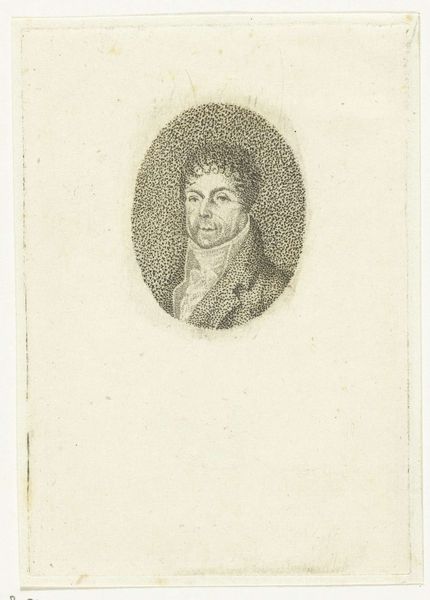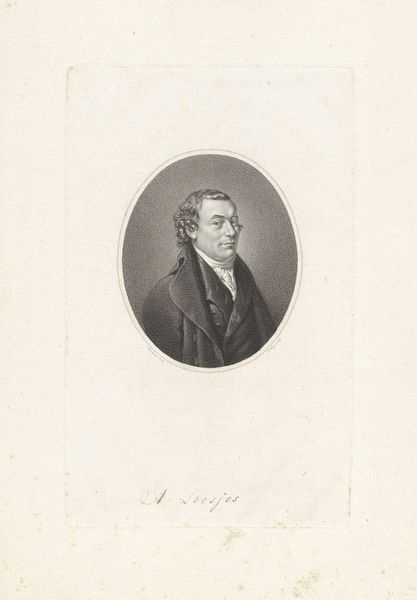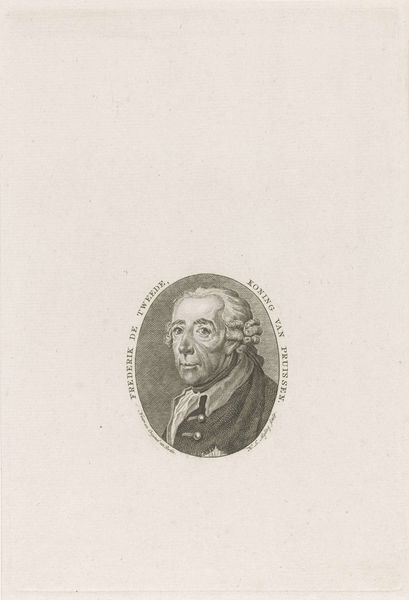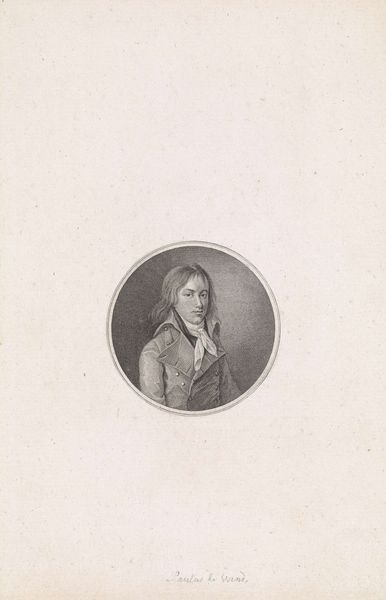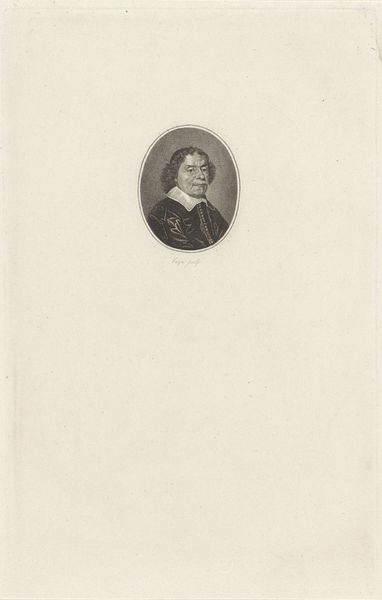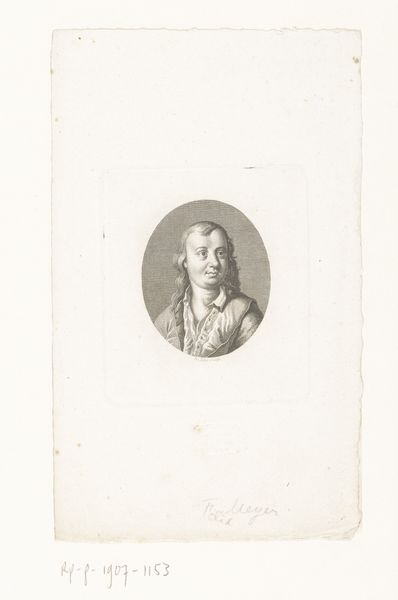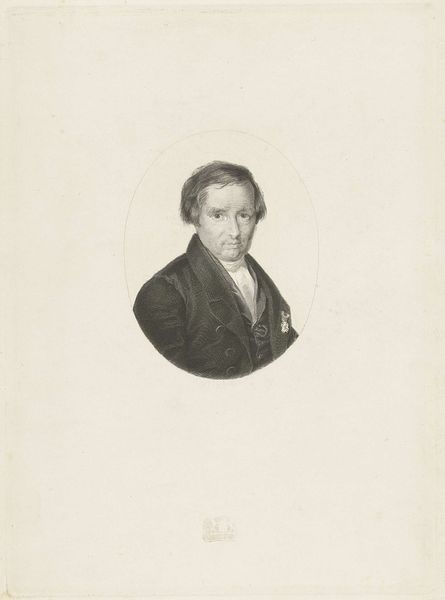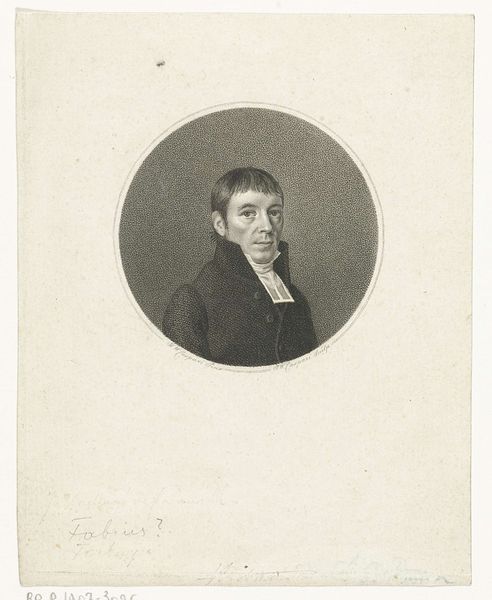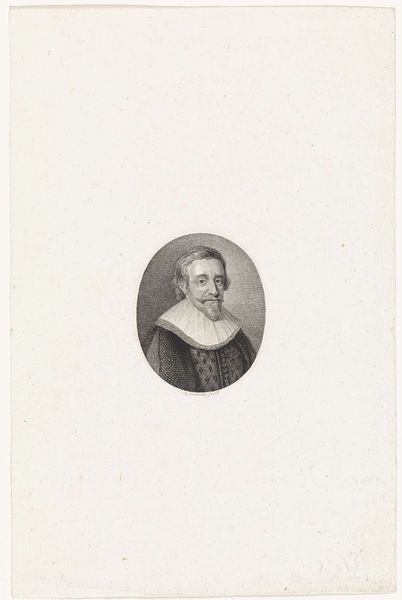
print, engraving
#
portrait
#
neoclacissism
# print
#
history-painting
#
engraving
Dimensions: height 234 mm, width 139 mm
Copyright: Rijks Museum: Open Domain
Editor: Here we have Noach van der (II) Meer’s "Portret van Bernardus Bosch," made between 1790 and 1792. It's an engraving. The first thing I notice is its circular frame, making it feel quite formal and almost like a miniature even at this size. How do you interpret this work through its historical context? Curator: That's a good starting point. We should consider the social function of portraiture at the time. This was during the rise of a powerful merchant class. Think about who was commissioning these portraits and why. These weren't royal portraits meant to convey divine right. Editor: So it’s about status, but a different kind of status than we see in earlier eras? A new kind of status that needs to be communicated and displayed? Curator: Precisely. These engravings, made into prints, facilitated wider dissemination. Consider the shift in power dynamics from the aristocracy to this burgeoning middle class. How does that impact artistic production? What purpose does art serve within these societal changes? Editor: It’s fascinating to think of art functioning almost like a business card, signaling one's place in this new social order. Curator: Exactly. And the clean lines, the understated elegance of the Neoclassical style… Do you see how that visually communicates ideas of reason, order, and perhaps even republican values valued by this new class? Editor: I do now! It's a far cry from the opulent displays of the aristocracy. I guess I was so focused on the portrait itself, I missed the broader picture of what it represented in society. Curator: Often the most interesting thing about art is understanding its role within its time, what purpose it served, what conversation it was a part of. Editor: I'll definitely keep that in mind moving forward. Thank you for shedding light on how socio-political forces influence artistic expression.
Comments
No comments
Be the first to comment and join the conversation on the ultimate creative platform.


